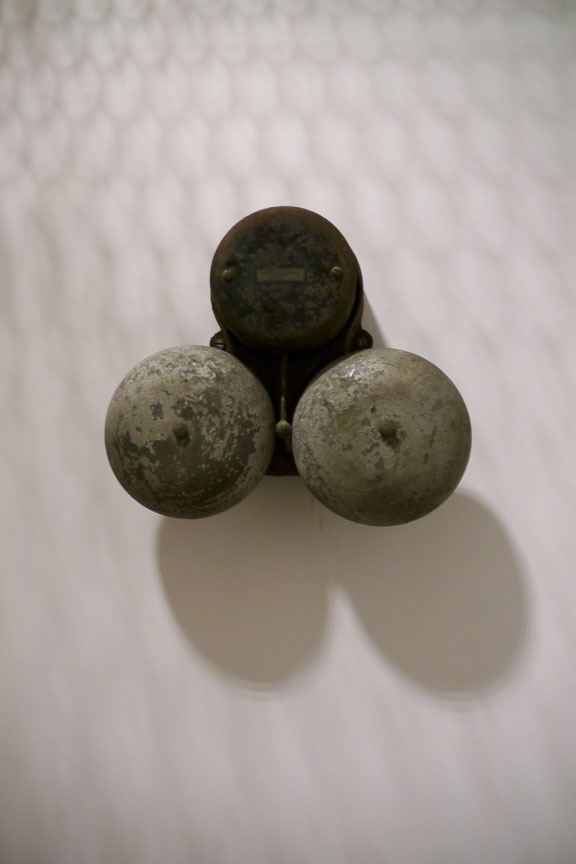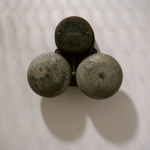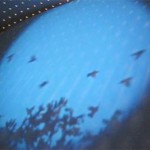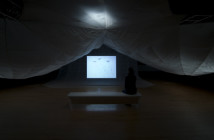Tocsin
(tok-sin)
n. 1. a. An alarm sounded on a bell.
n. 1. b. A bell used to sound an alarm.
n. 2. A warning; an omen.
Liz Nofziger makes installations that are more than site-specific; they are about the specificity of a site. Many of her pieces have been created from the very history of the locations in which they are shown. Molasses is piped from the walls of a former rum distillery, Pepsodent toothpaste emerges from the core of an old factory. For Tocsin, a former firehouse echoes with the ringing of alarm bells.
Tocsin is contained in a corridor that channels the viewer from the entrance of the firehouse, past a series of small video vignettes and ringing bells, and out into the main space that, while now updated with hardwood floors and a raised stage for a piano, still looks and feels like a firehouse. The channeling of one's experience through this corridor, beginning on the street and ending in the firehouse, creates a dislocation in time and a distortion of the sense of space. The light within the corridor is dappled and ghostly, a repeating pattern of white dots that extend the visual experience of the space.
Passing from one end of Tocsin to the other, one sees a variety of alarm bells that ring at unexpected intervals. Far from being annoying, though, these clanging sounds seem to come and go, some closer and others far away. The space, already distorted by the lighting, is stretched and changed even more by the coming and going of these alarms.
Alongside the bells are small vignettes of video, appearing at different heights along the wall. They are desaturated, as if culled from old films of a city in the past. Near the floor, a woman's foot in tall pumps walks along a sidewalk. At the top, birds fly over ominous trees reaching into a stark sky. These pieces of film are not narrative, yet they create another feeling of dislocation within the space. Time becomes flexible, changing and extending like the corridor of Tocsin.
Stepping out of the installation into the open floor of the firehouse, the bells are still in the air, and the dislocation created by the installation carries forward into the main gallery. The openness of the space, its big doors and obvious history charged by a sense of timelessness. Here I wish Nofziger had finished the outside of the corridor, as the exposed wires detract from the presence of Tocsinin the larger firehouse space. Yet it is a minor distraction, erased as one passes back through the installation on their way to the street, emerging outside with that same sense of dislocation, the streets of East Boston not quite settled in time or space.
- Liz Nofziger, Tocsin, installation detail, 2009.
- Video of the installation, taken by the author at the opening reception. Click image to view video.
"Tocsin" is on view December 5 - 20, 2009 (and continuing by appointment until January 3, 2010) at Engine Company 40 Firehouse, 260 SumNer Street in East Boston.
Image courtesy of the artist.






